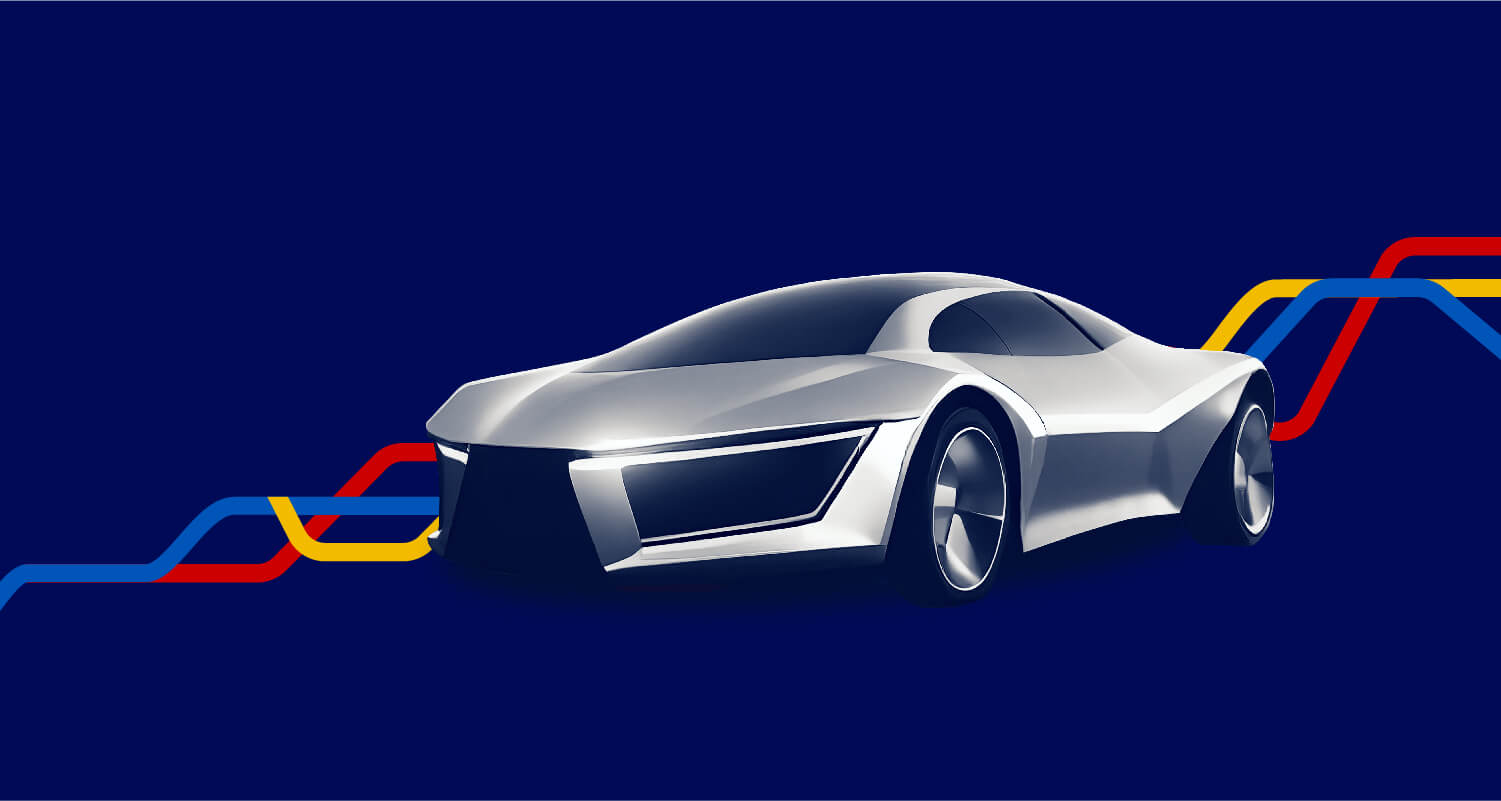IMD business school for management and leadership courses



Future Readiness Indicator
The future of the global automotive industry: The race is far from over
The automotive industry is being upended by electrification, digitization, and geopolitical shifts. A dramatic move in competitive positions is becoming increasingly evident as Chinese electric vehicle (EV) manufacturers are now challenging and, in some cases, surpassing traditional automotive giants.
- BYD leads the Future Readiness Indicator for the first time, followed closely by Tesla.
- Chinese dominance is deepening; three Chinese manufacturers make up the top four positions.
- The top tier is dominated by companies with a strong EV and software focus.
- Traditional automotive manufacturers are experiencing concerning trends and declining revenues, whereas Chinese manufacturers are demonstrating substantial growth.
- Supply chain digitalization and agility are essential to navigate a complex trade environment.
- Investing in brand and customer experience for global competitiveness is essential.
The changing competitive landscape
For the first time since undertaking our future readiness assessment of the global automotive industry, we observed BYD and Tesla achieving almost identical scores at the top tier of the Future Readiness Indicator. This represents a significant shift from previous years when Tesla maintained a comfortable lead over competitors. Our analysis reveals distinct competitive trends emerging in the automotive sector.
Leading companies prioritize software architecture and digital integration
The top tier is now dominated by companies with a strong EV and software focus. BYD leads with a score of 100, followed closely by Tesla at 98.1. Geely Automobile (82.0) and Li Auto (56.1) complete the top four positions. These companies share a common trait: they prioritize software architecture and digital integration in their vehicle designs.
Meanwhile, traditional automotive manufacturers are experiencing concerning trends. Companies like Stellantis, Volkswagen, BMW, and Mercedes-Benz have reported declining revenues, while the Chinese manufacturers BYD, XPeng, and Li Auto have demonstrated substantial growth. This divergence highlights the fundamental shifts occurring in consumer preferences and technological approaches.
Supply chain digitalization and agility are paramount
The importance of supply chain digitalization and agility in navigating today’s complex trade environment is increasingly important. Companies with digital supply chains, complete transparency, and modular product architectures are better positioned to adapt to rapid tariff changes.
EV vehicles, compared to traditional internal combustion vehicles, benefit from more supply chain flexibility. While EVs require sophisticated components like batteries and semiconductors, traditional automakers face even greater supply chain complexities. Managing a vast array of components for internal combustion engines, alongside emerging hybrid technologies, adds significant strain, especially as major automakers no longer exclusively focus on traditional vehicles only.
In contrast, EVs rely on advanced electronic management systems for core functions like battery control and regenerative braking. These demands have already pushed EV manufacturers to invest heavily in digital infrastructure and skilled talent, accelerating supply chain transformation with greater transparency, adaptability, and resilience.
Further, with fewer components and more standardized designs, EV manufacturers can more easily shift production locations or component sourcing to minimize tariff impacts.
Traditional manufacturers with complex global supply chains face greater challenges in adapting to tariff changes. Medium-sized traditional players like Honda appear particularly vulnerable, lacking both the scale advantages of larger manufacturers and the agility of newer EV companies.
To thrive in this new landscape, auto OEMs must fundamentally realign strategies. It is increasingly clear that the future will belong to companies that treat cars as “computers on wheels,” where seamless software features and rapid updates are possible.
Equally important is to build supply chain agility and local resilience. Greater transparency through digital tracking systems and local sourcing or manufacturing of critical components, such as batteries and chips, can mitigate shocks from trade wars or tariffs. Leading players are already localizing EV battery production in key markets and using AI to anticipate supply bottlenecks.
Investing in brand and customer experience for global competitiveness is essential. As EV technology itself becomes commoditized, brand differentiation and trust will determine winners. This is especially pertinent for the ambitious Chinese EV makers expanding abroad – they will need to convince skeptical Western consumers of quality, safety, and service, turning tech prowess into a beloved brand. Likewise, incumbents must revitalize their brands to shed any “old guard” image and showcase their innovations in electrification and connectivity.
Who is leading the pack (and who is falling behind)
Being future-ready in the auto industry means balancing today’s performance with tomorrow’s innovation. High-scoring companies tend to have strong current profits (fueling their war chest for future bets) and bold moves for the future, whether that’s investing in next-gen technology, reshaping their organization for speed, or expanding into new markets.
Chinese EV makers surge ahead
BYD, Li Auto, and XPeng are surging ahead not only due to cost advantages but through software-first vehicle architecture. These companies have reimagined cars, enabling over-the-air updates that recalibrate everything from suspension systems to safety features.
Tesla’s early lead in this domain is being eroded as BYD’s R&D intensity (23.35% CAGR) and innovation output – last year, BYD obtained 1,880 new patent authorizations, representing a surge of 113.64% compared to the same period in 2023 – far outpacing Western rivals. Further, BYD’s revenue growth (52.8% 3Y CAGR) and inventory turnover (6.17) reflect operational excellence, whereas Tesla’s stagnation (-9.4% Q1 2025 sales growth) highlights vulnerability when innovation slows. In comparison, traditional OEMs like Mercedes (-7.0% sales growth) and Stellantis (-8.8%) lag in software-driven R&D.
Chinese EV makers are also masters of rapid iteration. They launch new models or updates at a pace Western firms struggle to match. While a traditional automaker might take 5-7 years to develop a new vehicle generation, companies like Li Auto iterate in half that time or less, thanks to a startup-style organization. This agility is evident in product refreshes – for instance, Li Auto’s yearly upgrades to its extended-range EV SUVs incorporate customer feedback and the latest tech features almost in real-time. Such speed is a competitive advantage captured by the Indicator’s agility aspects (even if not an explicit factor, it influences innovation and growth metrics). It also aligns with how these firms managed to seize opportunities: when EV demand spiked, they ramped up production and introduced entry-level models quickly, capturing market share while some incumbents were still retooling factories. What we see is that Chinese automakers, unencumbered by legacy systems, are leveraging this agility to redefine user experiences.
Traditional automakers feel the squeeze
Legacy manufacturers face a dual crisis: plummeting profitability in China (a key growth market) and the inability to fund moonshot R&D. Volkswagen, despite leading traditional OEMs in future readiness, struggles with declining revenue (-7.4% market cap CAGR) and reliance on hardware-centric models.
How is future readiness measured?
Our Future Readiness Indicator is designed to measure a company’s readiness for deep, long-term, secular trends. We use a rule-based methodology to arrive at a composite score for each company, enabling us to identify industry leaders. We can then investigate the behaviors and attitudes of specific companies.
The Future Readiness Indicator assesses a company’s preparedness for the future through a comprehensive methodology. This includes evaluating key factors: Financial Fundamentals, Investor’s Expectations of Future Growth, Business Diversity, Employee Diversity/ESG, Research & Development, Early Results of Innovation, and Cash & Debt. The methodology uses publicly available data, including company websites, annual metric reports, business models, press releases, and third-party sources like CrunchBase, Espacenet, and Sustainalytics. The ranking is based on these factors and aims to provide a holistic roadmap of a company’s position and potential for future success. For more detail on how we develop the Future Readiness Indicator, please visit our Research Methodology page.
Latest report: Future Readiness in the Era of Adaptability
Sectors covered include Finance, Automotive, and Consumer-Packaged Goods.
Sign up to receive our latest insights and stay updated on upcoming events.











